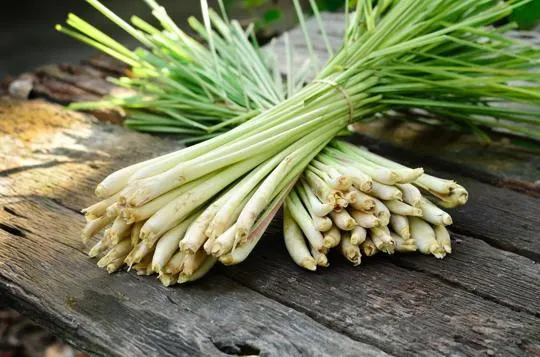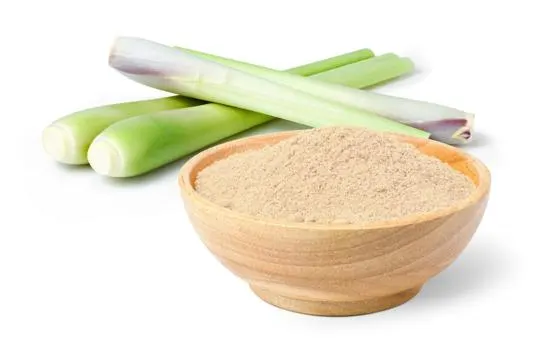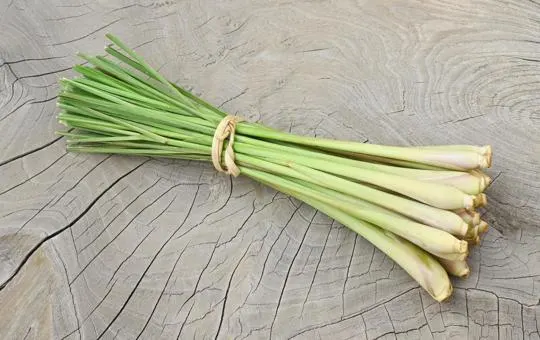Lemongrass powder and fresh lemongrass sit on our shelves, waiting to jazz up our cooking. Big question: What sets them apart? We’ve all had that moment, standing in the kitchen, pondering if one can simply substitute the other. Spoiler: it’s not that straightforward.
Our experience? One time, we tried swapping them willy-nilly. The result was a curry that tasted more like a lemongrass scented candle than a meal. Lesson learned. Lemongrass powder is concentrated, potent. Fresh lemongrass? It’s all about subtlety and aroma. They each have their stage where they shine.
In this showdown, we’re digging into the nitty-gritty. Texture, potency, and usage – we’ve got it all. No more second-guessing or culinary misadventures. After today, you’ll be a lemongrass whisperer.
What is Lemongrass Powder?
Lemongrass powder is a versatile ingredient with a unique and unmistakable flavor profile.
This ingredient is derived from lemongrass, a tall, tropical grass with a distinct lemony aroma.
The powder is made by drying the plant’s leaves and then grinding them into a fine powder.
Unlike other dried herbs, lemongrass powder retains much of the grass’s flavor.
Used in a variety of cuisines, lemongrass powder adds a zesty, citrusy note to any recipe.
It can be used in marinades, rubs, soups, and curries, or even in baked goods for an unexpected burst of flavor.
With its powerful taste and impressive health benefits, lemongrass powder is a must-have ingredient in any pantry.
What is Fresh Lemongrass?

Fresh lemongrass is grown in tropical regions and often used as an herb or flavoring in Asian cooking.
It has long, thick stalks with a lovely lemony scent and a hint of sweetness.
The edible part is the bulbous end, which can be sliced or pounded.
What makes fresh lemongrass stand out is its high essential oil content.
This gives it flavor and aroma, and also provides many health benefits like reducing anxiety, bloating, and indigestion.
To use fresh lemongrass, cut off the top portion and slice or pound the bulbous end.
It can be found at specialty markets or Asian grocery stores, though not at regular supermarkets.
Fresh lemongrass adds brightness and zest to dishes that powdered alternatives can’t.
Its special fragrance and taste make it perfect for soups, curries, marinades, and teas, giving them authentic Asian flair.
Differences Between Lemongrass Powder and Fresh Lemongrass

Lemongrass is a tasty herb.
But, which should you choose: fresh or powder? They each have different characteristics.
Preparation and Convenience
Lemongrass powder is a great choice for those who want convenience.
It’s easy to store, saves time in the kitchen, and has a longer shelf life than fresh lemongrass.
Plus, it adds flavor and aroma to any dish.
You can find it in a local spice shop or online.
However, there are certain recipes that require fresh herbs.
For example, Thai Tom Yum Soup and Vietnamese Pho Noodle Soup need bruised fresh stalks of lemongrass for texture.
Ultimately, it’s up to you to choose either fresh or powdered forms.
But, when it comes to preparation and convenience, lemongrass powder has the advantage.
Flavor and Aroma
Lemongrass is a popular Asian cooking ingredient.
Knowing the differences between lemongrass powder and fresh lemongrass can make a difference in your dish.
They have unique aromas and flavors.
Here are the differences:
- Lemongrass powder has a stronger flavor than fresh.
- Fresh lemongrass has a lemony-citrusy aroma, and powder has an earthy, sweet one.
- Fresh tastes grassy and herbaceous, while powder tastes sweet with ginger and nutmeg hints.
- Using fresh lemongrass needs chopping or pounding, while powder just needs adding.
- Fresh lemongrass is harder to find in stores than powder.
- Powder has a longer shelf life than fresh, which lasts 2 weeks in the fridge.
Both can be used interchangeably.
However, fresh is best for dishes like soups and curries, where its unique flavor adds depth.
Storage and Shelf Life
Proper storage is a must for lemongrass.
Fresh lemongrass should be kept in the fridge.
Wrap it in a damp paper towel, then put it in a plastic bag.
This method can keep it fresh for two weeks.
Lemongrass powder has a longer shelf life.
Put it in an airtight container and store it in a cool, dry place.
This can last up to six months.
Fresh lemongrass has a more vibrant flavor.
But if fresh isn’t available, powdered lemongrass can still do the job.
It’s key to remember that storage can make a big difference.
With proper storage, lemongrass will stay fresh and give your dish the best flavor.
Cooking and Culinary Uses
Lemongrass powder and fresh lemongrass are two ingredients used worldwide in cooking.
Knowing their differences can help you pick the right one for your recipe.
Fresh lemongrass comes from tropical regions and has a delicate citrusy aroma.
It’s used in soups, curries, marinades and teas.
Lemongrass powder is made by drying and grinding lemongrass stalks into a powder without adding anything else.
It has an intense lemony flavour.
Fresh lemongrass needs to be sliced or smashed for its flavour to diffuse into the dish.
With lemongrass powder, no preparation is needed.
But fresh lemongrass often gives better results and adds freshness and zing.
Lemongrass powder also stays fresh longer than fresh lemongrass stalks, which quickly lose their aroma and flavour after harvesting.
Similarities Between Lemongrass Powder and Fresh Lemongrass

Lemongrass is a classic ingredient in Asian cooking.
Fresh and powdered lemongrass can both be used to add flavor to dishes.
Both types have a citrusy taste that is great for teas, curries, and marinades.
Plus, they both provide health benefits like aiding digestion and boosting metabolism.
But there are differences.
Fresh lemongrass has a more powerful aroma and flavor than the powdered kind.
So, when using fresh, less is needed for the same effect.
And fresh leaves are frequently used in aromatherapy, while the powder cannot be.
In conclusion, knowing the different ingredients can help chefs and home cooks try out new recipes.
Either fresh or dry, lemongrass can bring new and exciting experiences to the kitchen.
Where to Buy Lemongrass Powder and Fresh Lemongrass?
Lemongrass powder and fresh lemongrass are used in many recipes.
If you’re wondering where to buy them, you have options.
- Look in the grocery store. Produce section or spice aisle? You’ll find both there.
- Shop online. Amazon and other online grocery stores have both versions.
- Head to a specialty store. Asian markets and herb stores usually carry lemongrass powder or fresh.
Remember, fresh lemongrass gives you a stronger flavor.
But, powdered is quick and convenient.
Think about what your recipe needs and your taste.
Then decide which lemongrass to buy.
Conclusion
Lemongrass has been used for centuries in Asian cooking, and its one-of-a-kind flavor is now enjoyed around the world.
Fresh lemongrass is usually used in dishes, but you can also get it in powder form.
Taste-wise, both are similar, but there are a few things to take into account.
When it comes to convenience, the powder is a winner.
It can be stored for a long time without losing flavor.
Fresh lemongrass, on the other hand, needs to stay in the fridge and be used within a few days.
Chefs often prefer fresh lemongrass because it gives dishes a texture that can’t be replicated with powder.
For example, it can make soups and stews crunchier, whereas the powder dissolves completely.
Another factor is the recipes you use.
When making marinades that need to stick to meat, fresh works best.
In the end, it all comes down to personal preference, usage, and recipe requirements.

Leave a comment